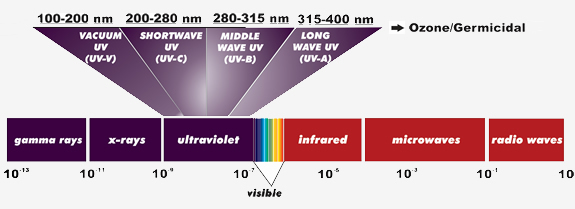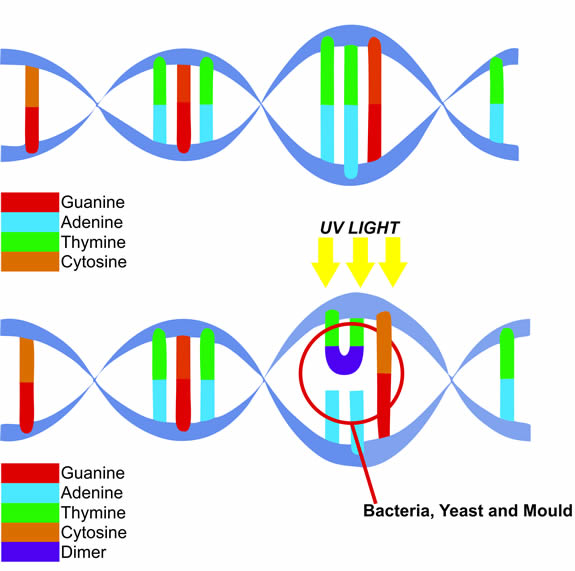Ultraviolet processing involves the use of radiation from the ultraviolet region of the electromagnetic spectrum for purposes of disinfection.
Ultraviolet covers a small part of the electromagnetic spectrum, and is considered to be germicidal against micro-organisms such as bacteria, viruses, protozoa, yeasts, moulds and algae. Ultraviolet treatment is performed at low temperatures and is classified as a non-thermal disinfection method.

Typically, the wavelength for UV processing ranges from 100 to 400 nm. The highest germicidal effect is obtained between 250 and 270 nm. This range may be further subdivided into:
- UV-A (315 to 400 nm) normally responsible for changes in human skin that lead to tanning;
- UV-B (280 to 315 nm) that can cause skin burning and eventually lead to skin cancer;
- UV-C (200 to 280 nm) called the germicidal range since it effectively inactivates bacteria and viruses,
- The vacuum UV range (100 to 200 nm) that can be absorbed by almost all substances and thus can be transmitted only in a vacuum.
SurePure employs UV-C radiation at the germicidal wavelength of 254 nm of sufficient energy and duration to inactivate contaminating pathogens, including viruses.
The transfer of radiation energy directly, selectively and efficiently to the microbial DNA limits secondary effects on liquid proteins, enzymes and other components and minimizes the affect on nutritional, sensory and marketing attributes of the natural product.
|
HOW DOES UV WORK?
The cellular DNA of the micro-organism specifically absorbs UV-C at these wavelengths, damaging the DNA of exposed cells by causing thymine dimer (peptide bond) formation in the micro-organisms DNA. The organism becomes reproductively inactive, unable to replicate and, with no residual effect, harmless to consumers. UV-C may be used in isolation or in combination with other processing technologies. |
|

|

